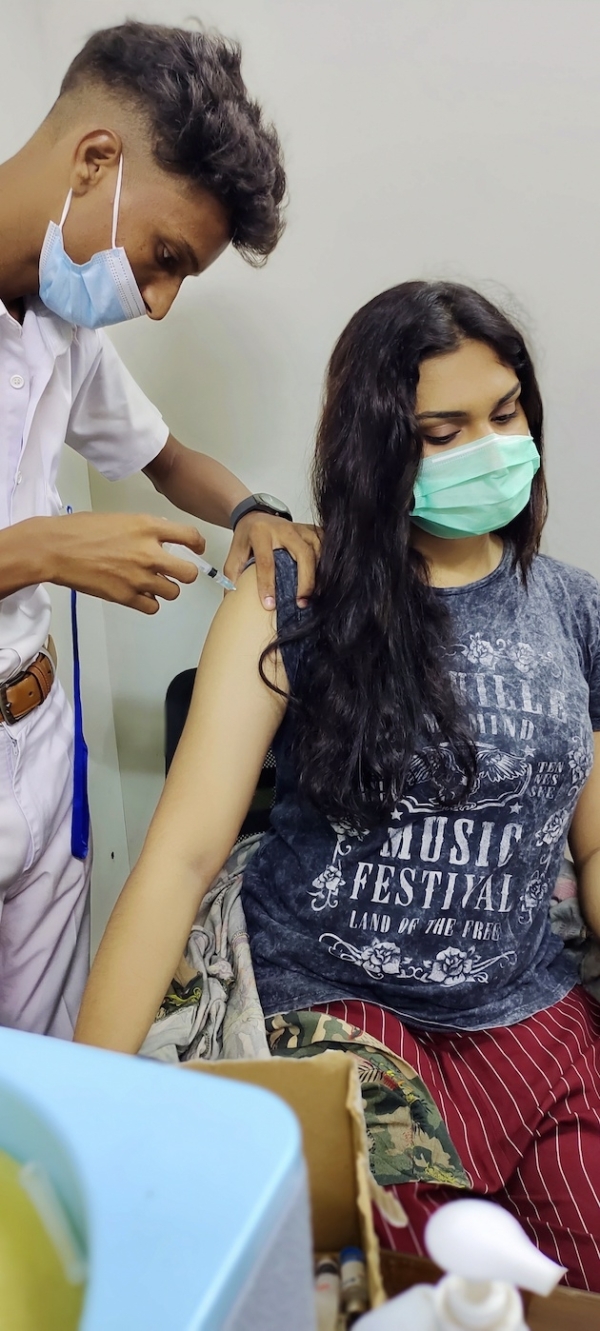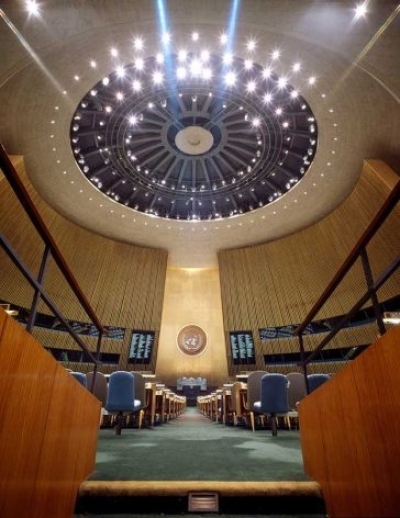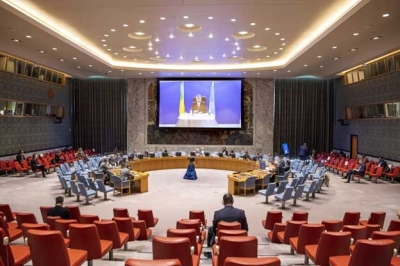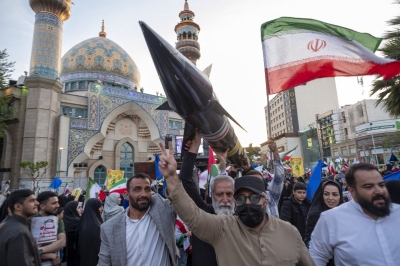KARACHI, Oct 31 (IPS) — After months of warding off appeals from his employers to get vaccinated for the COVID-19 disease, Mohammad Yusuf, 24, working as a live-in domestic worker in Karachi’s Clifton area, finally relented and got his first shot.
“I believed that anyone who took the vaccine would die within two years,” he told IPS. He said he got this information from social media.
The people who finally convinced him were his parents living in the village of Rahil, in Sindh’s province of Umerkot district, where, according to Yusuf, “not a single case of COVID-19 has to date been found.” But because Karachi was rife with the virus then, his parents explained that he might catch the infection if he remained unvaccinated.
The other reason for his hesitancy was the fear that if he got COVID-19 and was hospitalized, he may die without saying goodbye to his family and be buried unceremoniously by strangers. “You either got well within ten days, or you’d die a very difficult and painful death with breathlessness, high fever, and then death,” is how he explained the disease and its symptoms.
Rakhi Matan, 40, a caretaker for the elderly, had heard, “If someone got COVID-19, the government would come and pick them up from their home and take them to a center, inject poison into you after which you died”. It was this fear that got her to vaccinate herself. But since the shot, she often falls sick and attributes it to the vaccine.
The country began its COVID-19 vaccination campaign first by inoculating health workers on February 2, 2021, a year after the first case was reported in February 2020. This was followed closely by senior citizens and gradually to everyone over 18 years of age.
According to data from the Ministry of National Health Services Regulations and Coordination (MoNHSR&C), by March 2022, of the total eligible population of a little over 143 million, more than 125 million had received their first jab.
Dr Rana Imran Sikander, executive director at the Pakistan Institute of Medical Sciences and who was then heading the COVID-19 ward there, was the first person in Pakistan to receive the shot from the batch of 500,000 Sinopharm vaccines received from China.
It was also the time when “myths and conspiracies abounded,” leading to hesitancy and fear of side effects. The more far-fetched conspiracy theories circulating in his hospital included ‘Bill Gates wants to reduce the world’s population,’ ‘the United States is injecting microchips into humans to make them their slaves,’ ‘Gates wants to alter their DNA.’
“Seeing me well and alive gave a huge boost to my co-workers,” said Sikander, who luckily has not caught COVID-19 even once. It could also be because he had also volunteered a dose six months prior to the official shot for the vaccine trial, he said.
Gallup Pakistan carried out 13 surveys (from March 2020 to January 2022) to understand people’s attitudes towards the pandemic. It also recorded the change in their perception towards the disease and the vaccine over a two-year period.
“The most alarming finding was that for close to 60 percent of health professionals, social media was a key source of information, and as high as one in five doctors were not willing to take the vaccine,” Bilal I. Gilani, executive director at Gallup Pakistan, told IPS. A consistent perception among Pakistanis in general, during all these months, he said, was “that COVID-19 was a foreign conspiracy.”
Like epidemiologists study viruses and find solutions on how to control the spread of diseases, anthropologist Dr Heidi Larson studies misinformation and tries to contain it before it spreads like wildfire. She is, therefore, not surprised as to why Sikander’s colleagues were “hesitant or losing confidence in vaccines.”
She has been studying the trend of how rumors start, flourish, and then taper, for 13 years under her Vaccine Confidence Project that she started in 2010.
At a recent Global Media Dialogue, held earlier this month, organized by the Internews, Larson spoke to a group of journalists about how important it was for health workers and policymakers to “listen” to what people are saying and why and "even listen to the rumors,” and they will “reveal that they are not being heard”.
“That’s the cue to address the rumors,” she said. Already the findings say there is a drop in confidence around basic childhood vaccines, which she finds “pretty significant” and worrying as “we’ve never seen such a drop,” she said.
But how did the Pakistan government manage to get 130 million (above the age of 15) of the 250 million Pakistanis vaccinated for at least two doses in two years (by May 2022) after the pandemic? Given that the polio virus has continued to be found in Pakistan with communities refusing to get their children administered the oral vaccine, there was a fear among government officials it may face the same challenge with the COVID-19 vaccine.
Looking back to the two years of the pandemic, when he was the federal minister for planning and headed the National Command and Control Centre (NCOC) that had been set up to plan and contain the pandemic, Asad Umar said the two most important ingredients -- “transparency and sharing of real-time data with the media when COVID-19 struck” was how they managed to dispel misinformation.
“By the time we were ready to vaccinate the people, the media had become our allies and played a huge role in supporting us in fighting misinformation and even disinformation.”
The other reason was that “for a change, all political parties were on board, and there was across-the-board consensus and confidence on the decisions made by the NCOC,” he said. The center disbanded as quickly as it was formed. “It’s a good model and needs to be institutionalized if we are to fight any future catastrophes, natural or health,” said Umar.
In July 2021, 76 percent of Pakistanis claimed that the government was controlling the COVID-19 situation well, according to a Gallup survey, although it diminished to just 41 percent by 2022.
It was “the oneness of message and consistency, coupled with an efficient vaccine delivery, which helped fight vaccine hesitancy,” said Dr Zaeem Ul Haq, a health and risk communication (real-time exchange of information, advice and opinions between experts and people who face a health hazard) expert who led communication and community engagement part of Pakistan’s response to the pandemic.
But to understand how the country succeeded in vaccinating millions of people, Haq said it was important to differentiate between vaccine-resistant (due to vested interests and political or religious beliefs difficult to convert) and vaccine-hesitant (if their questions around vaccines are appropriately answered can be converted) groups to be able to continue fighting misinformation. Unfortunately, in Pakistan, he said, these terms were used interchangeably and erroneously by the Pakistani media, which must be avoided, especially in the case of childhood immunization.
He shared that with simple and consistent messaging, combined with an age-appropriate, systematic administration of a vaccine, this reason-specific hesitancy declined in subsequent surveys.”
Dr Zafar Mirza, former special advisor to the prime minister for health, the government’s use of innovative approaches helped reach diverse and underserved populations.
“We put out pro-vaccination messages replacing the ringtones for nearly 150 million mobile phones, which made a huge impact,” he said. The Gallup survey found that by 2022, 84 percent of adult Pakistanis with mobile phone access had received at least one dose of the COVID-19 vaccine.
Another task carried out successfully was by the brigade of female community health workers and vaccinators, who convinced people to get vaccinated.
“Through the over 8,000 vaccinators and health workers and 300,000 community leaders, we managed to reach a population of 35 million in the remotest parts of Pakistan,” said Mirza.
A toll-free helpline, the Sehat Tahaffuz-1166, launched just before the pandemic in November 2019 to provide guidance for polio and its vaccine, was used to disseminate information about COVID-19.
“At one point, we had 500 call agents and 30 doctors daily assuaging the apprehensions and concerns about the infection and later the vaccine itself,” Mirza told IPS. From approximately 300 calls per day in 2019, it reached to 25,000, although the agents have attended as many as 70,000 calls in a day, too, he added.
For its part, UNICEF helped the government in battling vaccine hesitancy on social media platforms. “Through regular static posts and short videos, we communicated verified information about the vaccine’s efficacy. We posted messages from doctors, religious leaders, youth representatives, celebrities, community leaders, and even vaccinated individuals on our social media accounts,” UNICEF’s communications specialist, A. Sami Malik, told IPS. In addition, it regularly organized live interactive sessions on FB, Twitter Space, and Instagram, with experts providing responses to people’s questions and concerns.
This is not the last of the pandemics. Scientists are already warning of the possibility of a COVID-19-like pandemic at the scale of 2.5 percent to 3.3 percent yearly and 47 percent to 57 percent in the next 25 years. While vaccine hesitancy may have lowered, it has not ended after the pandemic. In fact, it gets fueled every time there is a reemergence of measles and polio in Pakistan. While vaccines must be delivered to the public in a coherent and effective manner to ensure public confidence in them, it will pay dividends if, as Dr Larson says, countries in general and Pakistan in particular, can recognize “the importance of emotions in people’s decision-making and in their willingness to cooperate.”
IPS UN Bureau Report






